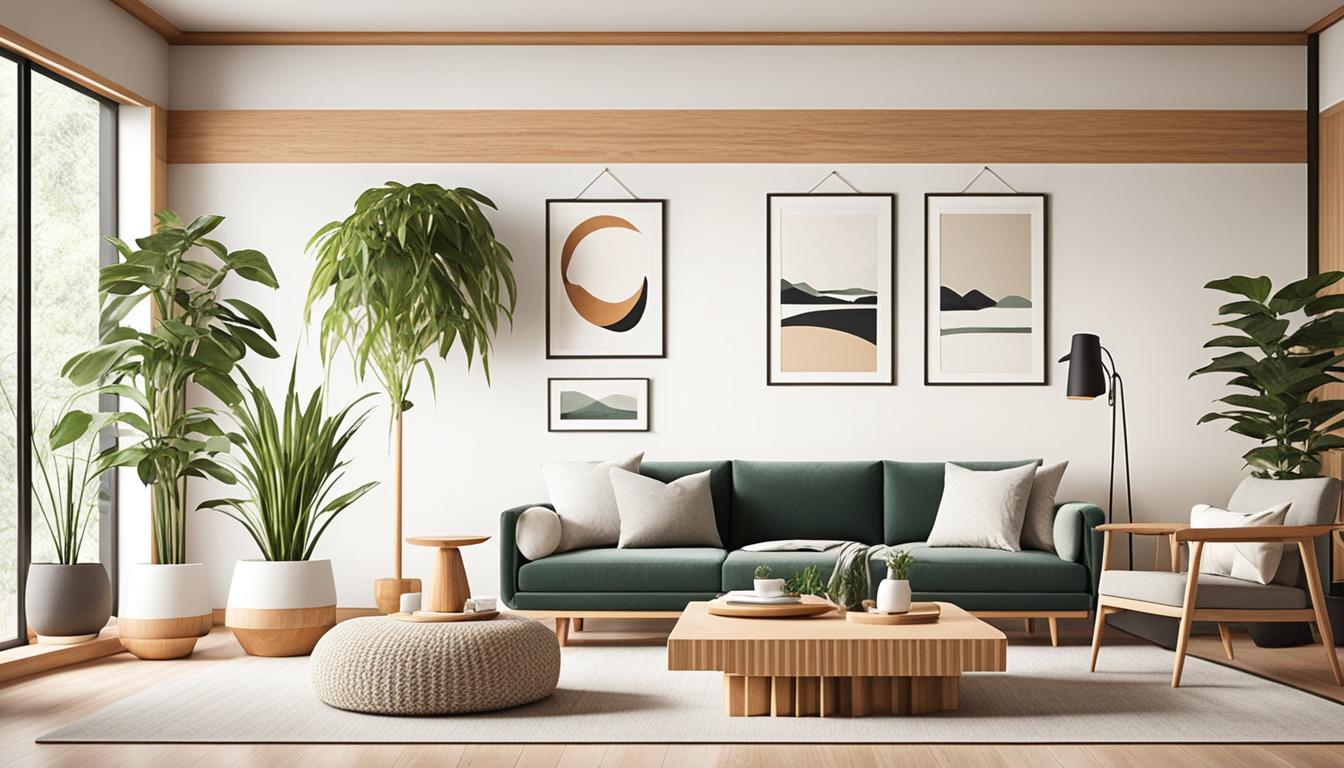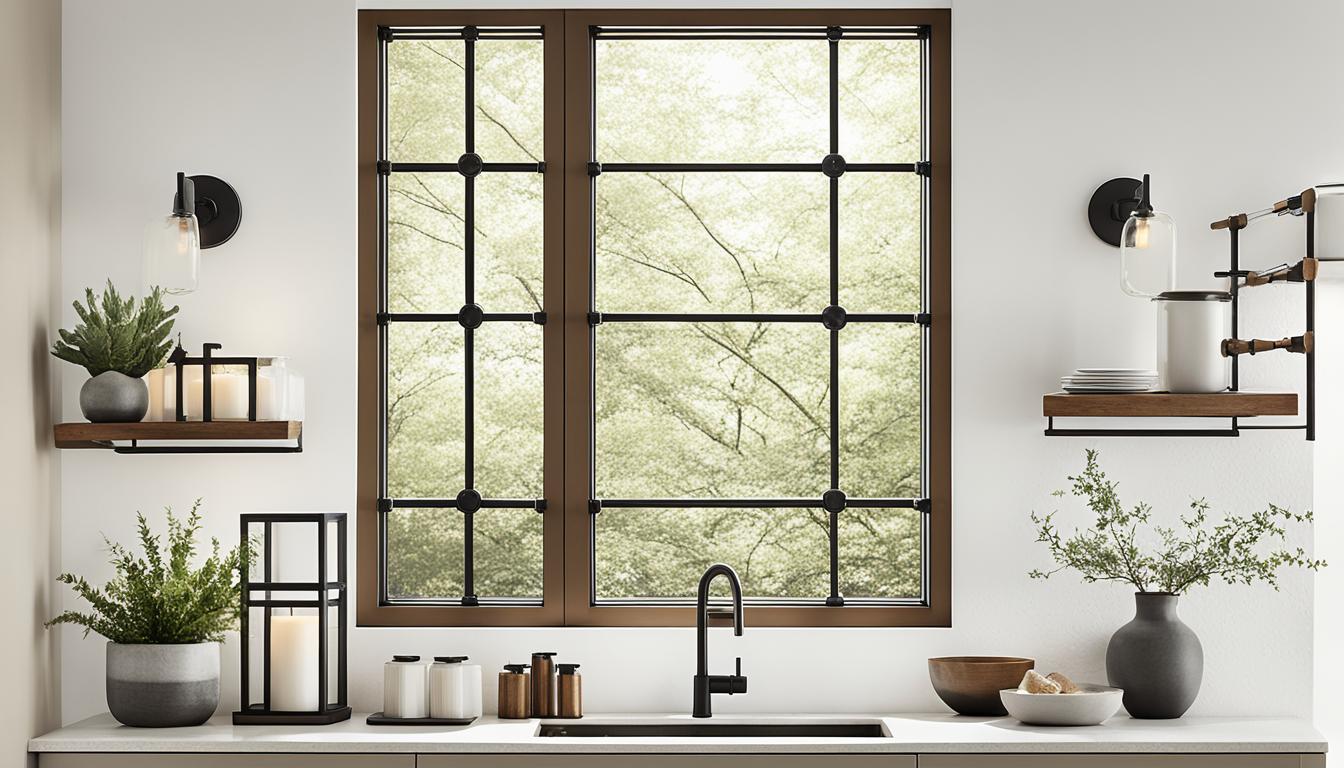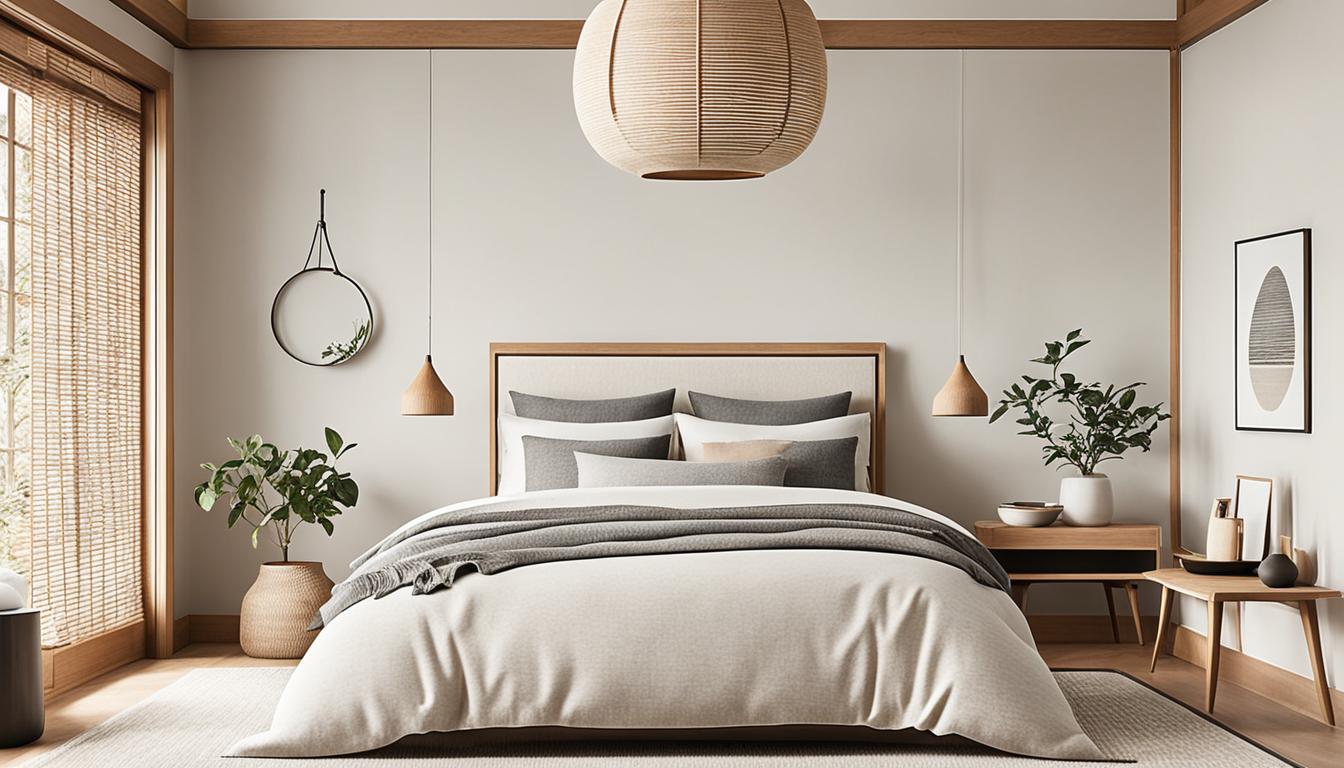🤍 Unmatched Quality, Authentic Craftsmanship
🤍 Unmatched Quality, Authentic Craftsmanship
🤍 Unmatched Quality, Authentic Craftsmanship
Welcome to our guide on Japandi trim ideas, where we will explore the fusion of style and simplicity that defines modern Japandi design.
Japandi is a contemporary aesthetic that combines the clean lines and minimalism of Scandinavian design with the elegance and serenity of Japanese aesthetics.
By incorporating Japandi trim concepts into your interior, you can create a harmonious and tranquil space that exudes both modernity and tranquility.
At Mojo Boutique, we believe in the power of Japandi design to transform your home into a serene sanctuary.
In this article, we will provide you with a range of inspiring Japandi trim ideas, from minimalist trim styles to sleek concepts that go beyond the ordinary.
We will also discuss the incorporation of natural elements like wood and stone, as well as the use of metals and ceramics to add a contemporary edge to your Japandi-inspired interior.

With our expert tips and guidance, you'll learn how to choose the right trims to achieve a cohesive Japandi decor, whether you're making small changes or undertaking a complete remodeling project.
So, let's dive into the world of Japandi trim ideas and create a space that effortlessly blends style and simplicity.
In this section, we will delve into the origins and evolution of Japandi design, discussing how it emerged as a fusion of Japanese and Scandinavian influences.
We will explore the cultural symphony that gave birth to Japandi, highlighting the unique characteristics and defining features of this design style.
By understanding the essence of Japandi, you will gain a deeper appreciation for its aesthetic appeal and the principles that guide Japandi trim ideas.
The origins of Japandi can be traced back to the mid-20th century, when Japanese design principles began to influence Scandinavian interiors.
The clean lines, functional design, and emphasis on natural materials found in Scandinavian interiors resonated with the Japanese concept of wabi-sabi, which celebrates the beauty of imperfection and the use of organic elements.
Through a cultural exchange, these two design philosophies merged to create Japandi, a design style that embodies simplicity, serenity, and a deep connection to nature.
It is a true cultural symphony that seamlessly blends the best of both worlds.
Japandi design is characterized by several defining features that distinguish it from other interior design styles. These features include:
By embracing these defining features, Japandi design creates interiors that are serene, timeless, and effortlessly elegant.
It is a design style that resonates with those seeking a balance between simplicity and sophistication, nature and minimalism.
| Origins of Japandi | Defining Features of Japandi Design |
|---|---|
| The fusion of Japanese and Scandinavian influences | Minimalism |
| Emergence as a response to the desire for a calm and serene living environment | Natural Materials |
| Cultural exchange between Japanese and Scandinavian design principles | Neutral Color Palette |
| Integration of Japanese concept of wabi-sabi and Scandinavian design | Craftsmanship |
| A true cultural symphony that seamlessly blends the best of both worlds | Balance |
Japandi design is known for its minimalist approach, which extends to the choice of trims in interiors.
The simplicity of Japandi decor is reflected in the sleek and understated trim styles that enhance the overall aesthetic of the space.
When it comes to door trims, minimalist styles are favored in Japandi interiors. Clean lines and subtle details create a sleek and timeless look.
Whether it's a simple flush door trim or a narrow profile that blends seamlessly with the wall, minimalist door trims contribute to the overall simplicity of the design.
Window trims in Japandi interiors also follow the minimalist aesthetic.
Sleek and understated window frames, often in neutral colors, allow the focus to be on the outside view.
These minimalist window trims provide a seamless connection between the interior and the natural surroundings.

Incorporating minimalist trim styles in Japandi interiors emphasizes the clean and uncluttered look that is so characteristic of this design style.
By opting for sleek and understated trims, you can create a space that exudes simplicity and tranquility, allowing the other elements in the room to shine.
Natural materials are at the heart of Japandi design, bringing a sense of warmth and elegance to the interior.
In this section, we will explore two essential elements of Japandi trim: wood and stone.
These natural elements not only add aesthetic appeal but also contribute to creating a serene and harmonious atmosphere.
Wood is a key component in Japandi design, adding a touch of warmth and organic beauty to the space.
The choice of wood trim can significantly impact the overall ambiance of the interior.
From light-toned woods like maple and birch to rich and dark woods like walnut and ebony, there are various wood varieties to choose from, each with its own unique characteristics.
Stone trims bring a sense of elegance and sophistication to Japandi decor.
Whether used as a focal point or subtly incorporated into the design, stone trims add depth and texture to the interior.
Natural stones like marble, granite, and travertine can be used for trims around fireplaces, countertops, or even as statement pieces in accent walls.
The elegance of stone trims perfectly complements the simplicity and aesthetic appeal of Japandi design.
| Wood Varieties | Stone Types |
|---|---|
| Maple | Marble |
| Birch | Granite |
| Walnut | Travertine |
| Ebony |
The choice of colors is crucial in creating the Japandi aesthetic.
To achieve a harmonious and serene atmosphere in your Japandi-inspired interior, it is important to carefully consider the color palettes for your trims.
In this section, we will explore different color schemes that work well with Japandi trims, allowing you to create a visually appealing and balanced space.
Incorporating neutral colors into your Japandi decor can help create a sense of tranquility and simplicity.
Shades of white, beige, gray, and soft pastels can establish a serene backdrop that allows the natural textures and materials to shine.
Neutrals provide a timeless and elegant aesthetic that complements both Japanese and Scandinavian design elements.
Earth tones are also key in Japandi design, as they bring warmth and grounding to the space.
Colors inspired by nature, such as warm browns, soft greens, and muted earthy hues, create a connection to the natural world and foster a calming atmosphere.
These tones can be introduced through wooden trims, furniture, and natural accents.
To enhance the serenity of neutrals and earth tones, consider incorporating natural light and using matte finishes on your trims.
Natural light will highlight the colors and textures, while matte finishes will provide a soft and understated look.
While neutrals and earth tones form the foundation of Japandi color palettes, accent colors can add impact and visual interest to your trims.
When choosing accent colors, consider shades that complement the overall palette and create a balanced contrast.
Deep blues, rich greens, and warm mustard yellows can provide a pop of color and inject personality into your Japandi trims.
These impactful hues can be introduced through accessories, artwork, or statement furniture pieces.
By strategically placing these accent colors, you can create focal points and add depth to your Japandi-inspired space.
Remember that moderation is key when using accent colors in Japandi design. Use them sparingly to maintain a sense of simplicity and harmony.
Too many bold colors can disrupt the overall balance and tranquility of the space.

| Neutral Color Palette | Earth Tone Color Palette | Accent Color Palette |
|---|---|---|
|
|
|
By carefully selecting color palettes for your Japandi trims, you can create a space that is visually appealing, harmonious, and aligned with the essence of Japandi design.
The combination of neutrals, earth tones, and impactful accent colors will help you achieve a balanced and serene interior that embraces the beauty of simplicity.
In this section, we will explore unique trim ideas and unexpected elements that can be incorporated into Japandi design, pushing the boundaries of traditional aesthetics.
Our goal is to inspire you to create a contemporary and visually striking interior that embraces the sleekness of Japandi design.
When it comes to trim concepts in Japandi interiors, the key is to think outside the box.
From innovative handle designs to creative trim applications, the possibilities are endless.
By incorporating unexpected elements into your space, you can add a touch of uniqueness that sets your Japandi-inspired interior apart.
One sleek Japandi trim concept that can elevate your space is to use contrasting materials.
For example, mixing metal and wood trims can create a modern and sophisticated look.
Consider using brushed brass or stainless steel handles on wooden cabinets or incorporating metal accents on wooden furniture pieces.
Another way to go beyond the ordinary is by experimenting with textures.
Japandi design is known for its focus on simplicity, but that doesn't mean you can't play with texture.
Explore textured trims like ribbed or patterned handles or incorporate textured wall panels to add visual interest to your space.
Incorporating metals and ceramics into decor adds a touch of contemporary japandi aesthetic while still maintaining the essence of simplicity and minimalism.
The combination of these materials brings a modern edge and a sense of craftsmanship to Japandi interiors.
Let's explore how metal trims and ceramic accents can elevate your Japandi-inspired space.
Metal trims are a great way to add a sleek and modern touch to Japandi interiors.
They provide clean lines and subtle details that enhance the overall design.
Consider using metal trims for elements such as door frames, window frames, and cabinet handles.
The contrast between metal trims and the natural materials often used in Japandi decor, such as wood and stone, creates an interesting visual balance.
Experiment with different metal finishes, like brushed nickel or matte black, to find the perfect match for your Japandi interior.
Ceramics bring charm and a touch of craftsmanship to Japandi-inspired spaces.
Incorporate ceramic accents in the form of decorative tiles, vases, or tableware.
These pieces not only add visual interest but also celebrate the importance of handcrafted elements in Japandi design.
Opt for ceramic trims that feature organic shapes and earthy tones to create a harmonious connection with the natural elements often found in Japandi interiors.

| Metal Trims | Ceramic Accents |
|---|---|
| Door frames | Decorative tiles |
| Window frames | Vases |
| Cabinet handles | Tableware |
Metal trims can be used for door frames, window frames, and cabinet handles, while ceramic accents include decorative tiles, vases, and tableware.
Craftsmanship is a crucial element in Japandi design, as it pays homage to traditional techniques and showcases artisanal expertise.
The meticulous craftsmanship involved in creating Japandi trims adds a unique touch of authenticity and elevates the overall aesthetic of the interior.
In Japandi design, craftsmanship is highly valued, as it reflects the attention to detail and dedication to quality that are central to both Japanese and Scandinavian cultures.
Traditional techniques, handed down through generations, are embraced to create trims that are not only visually appealing but also functional and durable.
Whether it's the intricate joinery of wooden trims or the delicate weaving of natural fibers, craftsmanship in Japandi trim brings a sense of artistry and authenticity to the design.
Each trim is meticulously crafted, showcasing the skills and expertise of artisans who have honed their techniques over time.
Handcrafted trims are a hallmark of Japandi design, symbolizing appreciation for artisanal expertise.
These trims are often created using traditional methods, paying tribute to the cultural heritage and craftsmanship of both Japanese and Scandinavian traditions.
From intricate carvings on wooden trims to carefully applied finishes on metal and ceramic trims, each handcrafted detail adds a layer of depth and character to the interior.
These artisanal trims not only enhance the visual appeal of the space but also evoke a sense of craftsmanship and authenticity.
By embracing craftsmanship and traditional techniques in Japandi trim, you can create an interior that exudes beauty, sophistication, and a genuine appreciation for the artistry behind each detail.
Biophilic design principles can greatly enhance the Japandi aesthetic by bringing the beauty of nature into the interior.
By incorporating elements inspired by the natural world, Japandi trims can create a harmonious and soothing atmosphere in your home.
In this section, we will explore different Japandi trim ideas that incorporate biophilic design elements, seamlessly blending the simplicity of Japandi decor with the organic beauty of nature.
Biophilic design focuses on our innate connection to nature and the positive impact it has on our well-being.
When applied to Japandi trimming, biophilic principles can create a sense of tranquility and balance in the space.
By incorporating natural materials, organic textures, and flowing shapes, Japandi trims can evoke a sense of harmony and connection with the environment.
Biophilic design also emphasizes the importance of natural light, creating a seamless transition between indoor and outdoor spaces.
Utilizing large windows, skylights, or glass doors as part of Japandi trims can maximize natural light, allowing it to flood the interior and further enhance the biophilic aesthetic.
Furthermore, biophilic design principles advocate for the inclusion of living elements, such as plants, in the interior.
The use of plants as decorative trims in Japandi design not only adds a touch of nature but also improves air quality and promotes a sense of well-being.
Incorporating plants into Japandi interiors can be achieved through various means.
Consider using hanging planters, potted plants, or wall-mounted plant holders as decorative trims.
Opt for plant species that thrive indoors with minimal maintenance, such as snake plants, peace lilies, or bonsai trees.
The presence of living greenery will add a refreshing and calming element to your Japandi trims.
Another way to incorporate biophilic design into Japandi trims is through organic shapes and forms.
Choose furniture and accessories with natural curves, flowing lines, and gentle contours.
These organic shapes mimic the forms found in nature, creating a sense of harmony and balance within the space.
For example, consider incorporating chairs with curved backs, round mirrors, or tables with soft edges as part of your Japandi trims.
These organic shapes will add visual interest and a soothing element to the overall design.
In summary, incorporating biophilic design principles into Japandi trims can bring a sense of serenity and balance to your interior.
By embracing natural materials, incorporating organic shapes, and adorning your space with plants, you can create a Japandi design that is not only visually appealing but also fosters a deep connection with nature.
Selecting the right trims is an essential aspect of creating a cohesive and harmonious Japandi design.
To help you make informed decisions, we have put together some japandi decorating tips for trim selection.
By considering key factors such as material, color, and style, you can enhance the overall aesthetic of your space and achieve a perfect balance between Scandinavian simplicity and Japanese minimalism.
Incorporating a variety of trim styles can add visual interest and depth to your Japandi decor.
Consider mixing and matching different trims throughout your space while keeping a cohesive theme.
For example, you could use minimalist wood trims on doors and windows, paired with stone trims on accent walls or fireplace surrounds.
This blending of materials and styles creates a harmonious fusion of Japanese and Scandinavian influences.

Now that you have read the above article, maybe you still have a couple of questions on this topic, so we will answer these questions below.
Japandi design is a harmonious fusion of Japanese and Scandinavian aesthetics, combining the simplicity of Scandinavian style with the minimalism of Japanese design.
Examples of minimalist trim styles in Japandi interiors include sleek and understated door trims and minimalist window trims.
Neutrals and earth tones create a serene and harmonious atmosphere in Japandi interiors.
Accent colors can be used to add impact and visual interest to the trims.
Sleek Japandi trim concepts go beyond ordinary trims and incorporate unique ideas and unexpected elements to create a contemporary and visually striking interior.
Craftsmanship is important in Japandi design, honoring traditional techniques and serving as a nod to artisanal expertise.
Handcrafted trims can showcase intricate details and meticulous craftsmanship.
Key considerations when choosing trims include material, color, and style.
Mixing and matching trims can also help achieve a cohesive and harmonious Japandi decor.
In conclusion, Japandi design offers a perfect blend of style and simplicity, creating serene and stylish interiors.
Throughout this article, we explored various trim ideas that embrace the Japandi aesthetic, incorporating minimalist styles, natural elements like wood and stone, and the use of colors and unique concepts.
By incorporating Japandi design principles and following the guidelines discussed, you can transform your home into a harmonious sanctuary.
The minimalist trim styles bring a sense of calm and sophistication, while the addition of wood and stone trims adds warmth and elegance.
The choice of colors, whether it's neutrals and earth tones or impactful accent colors, further enhances the Japandi aesthetic.
We also discussed sleek and contemporary trim concepts, including the use of metals and ceramics, as well as the role of functionality and craftsmanship in Japandi trim choices.
The incorporation of biophilic design principles, such as plants and organic shapes as decorative trims, can further enhance the connection to nature.
Overall, Japandi trim ideas provide endless opportunities for creating a modern and serene interior.
By implementing these concepts and ideas, you can infuse your home with the beauty and tranquility of Japandi design, making it a space that reflects your unique sense of style and appreciation for the blend of Japanese and Scandinavian aesthetics.


